Knysna’s Trent Read has been involved in the business of art for 50 years.
Featherbed Nature Reserve, Knysna: the origins story
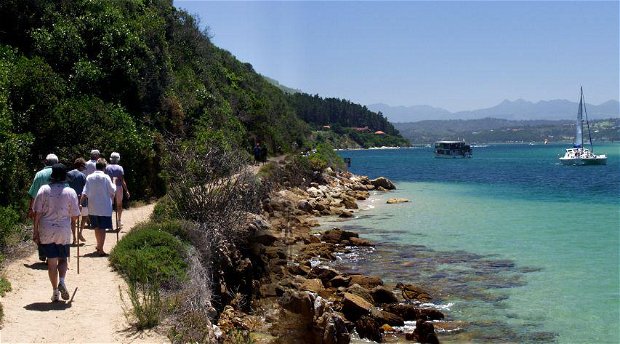
Opened to guests in 1984, Knysna’s Featherbed Nature Reserve quickly grew into one of the Garden Route’s biggest tourism attractions. Martin Hatchuel takes a look at its origins and early history under its founder, William Smith.
Please scroll down for a gallery of pics.
The mouth of the Knysna River Estuary must surely rank as one of South Africa’s most loved and recognised natural attractions: two towering massifs set a little less than three hundred metres apart across a watery channel, the Eastern Head covered with exclusive homes, and the Western Head (with its famous, bell-shaped cliff face) covered with natural, indigenous fynbos and milkwood forest.
But how was the Western Head spared development?
Short answer: the ichthyologist JLB Smith, and his son, the teacher William Smith.
Long answer:
The Smith family comes to Knysna
JLB Smith was a researcher and lecturer in chemistry who had earned his Ph.D. from the University of Cambridge in 1922 (Smith, MM, 1969), but who later moved permanently into the study of fishes.
Having fallen in love with fishing as a 5-year old on holiday with his parents in Knysna, JLB bought a holiday cottage on the banks of the Salt River, which then marked the western edge of the village, in 1928. He chose the site for its direct access to the lagoon – essential for angling while on much needed family breaks away from his academic life at Rhodes.
The property originally had a small corrugated iron cottage on stilts and a tin-roofed milking shed. In 1948 he swapped the corrugated iron – which was then still in short supply as a result of the Second World War – for a supply of bricks and mortar, and built the double-story home that would become known as the Blue House (now On the Estuary guest house).
The house, which became a landmark on the road from George, got its name from its colour: the outside walls were painted with JLB’s own formula of Reckitt's Blue mixed with prickly pear sap (more war-time shortages!)
Given the property’s marshy location, the mixture was designed to keep mosquitoes and other insects away.
“The construction included a lab for JLB to continue his fish research while in Knysna,” said William’s wife, Jenny, in 2022. (Pers. comm.)
“When I arrived in the 1970’s, the lab was still pretty much as JLB had left it (he died in 1968), and I found lots of Reckitt’s Blue as well as paraffin primuses, tinned food, and instant NesTea and NesCafé left over from their fish collecting expeditions.”
Margaret had grown up in Indwe in the Eastern Cape. “Her family had no connection with the sea or Knysna, which made her proficiency in diving, collecting, and illustrating fish specimens [skills she acquired while working with her husband as an ichthyologist], all the more remarkable.
“She shared her memories of rowing JLB to Featherbed all the way from the Salt River house – which was no mean feat, but, as JLB was plagued with ill health resulting from the East African campaign in the First World War, she did most of the physical work in the partnership.
“The rowing trips to Featherbed were timed to catch the outgoing tide, and to return – always with a good catch – on the incoming tide. It was a tough gig nonetheless, and she was over the moon when JLB bought an aluminium boat with a Seagull outboard motor.
“A memory still sharp today was in December 1980, when William and I crossed the Heads in this little boat a month after our eldest daughter, Helen, was born. It was quite an interesting experience embarking with baby, corgi, picnic basket, etc., at the Pilot’s Jetty on the Eastern Head, and crossing the mouth against wind and tide (William’s Dad would not have approved!) to land at Coffin Bay for oysters and freshly caught elf cooked on the coals.”
JLB Smith and the coelacanth
JLB Smith is perhaps best-known by the general public for his work on the coelacanth – a fish thought to have been extinct for more than 65 million years, but which turned up (for the first time, as far as modern science was concerned) off the Chalumna River Mouth, near East London, in December, 1938.
JLB was enjoying a summer holiday with Margaret at the Blue House when he received the now famous letter from the curator of the East London Museum, Marjorie Cortenay-Latimer, advising him of the recovery of a “most queer-looking specimen” – which would turn out to be the coelacanth, Latimeria chalumnae. (See: Knysna Museums: ‘The Coelacanth’)
Margaret, though, was pregnant with William:
‘We arrived at almost the same time – the coelacanth in December 1938 and I, six months later [on 25 June, 1939]. I was told that during the months preceding my arrival it was all hands to "the fish" so when I was born there were no baby clothes (thank heaven for a granny). Fortunately I was not born with scales as some had predicted! My earliest recollections were of two parents who did nothing but work, both at university and at home (which I assumed all parents did).‘ (William Smith in ‘The Annotated Old Fourlegs. The Updated Story of the Coelacanth.’ Bruton, 2018)
William would often later say that his lifelong interest in conservation was sparked by his early experiences fishing and collecting with his parents: during his holidays he spent hours fishing on the Knysna Lagoon, and in his Standard 8 year (year 10) he spent six months on one of his parents’ fish collecting expeditions in the Seychelles.
During William’s formative years, the Smiths worked on ‘The Sea Fishes of Southern Africa’ – which featured Margaret’s now famous illustrations, and which was published in 1945 – and, of course JLB wrote (amongst many others) his international best-seller,‘Old Fourlegs The Story of the Coelacanth,’ which he published in 1956, and which ran to six English editions and appeared in nine other languages, too. (Bruton, 2017)
The Knysna Heads was JLB’s favourite fishing destination – particularly, he loved the piece of land on the Western Head that features the double-pyramid-shaped Duiker Rock (now known as JLB Rock). He therefore bought this property in 1950 (Portion 60 of the farm Uitzigt 216), and in 1953 bought the neighbouring property on William’s behalf, when William was just 14 years of age (Portion 59 – commonly known as Featherbed Bay).
JLB financed these purchases out of the sales of his books, having “benefited from the publication of Old Fourlegs, as the book and its translations were very profitable.” (Bruton, 2017)
Like his Dad before him, William went on to study at university: first at Rhodes, where he completed two degrees – a Bachelor of Science and a B.Sc Hons (in chemistry) with distinctions in both – and then at the University of Natal (Pietermaritzburg campus), where he completed his master's degree in only five months in 1961.
Unlike his Dad, though, William decided he wasn’t cut out for the life of an academic, and instead went into industry and, later, into the business of supplementary education, establishing the famous South African Star Schools and The Learning Channel. (See, Knysna Museums: 'William Smith: Evolution of an educator')
Featherbed Nature Reserve: early beginnings
In the 1890s, the civil commissioner and resident magistrate in Knysna, Maximillian Jackson, established a Rocket Brigade to fire rockets with lifelines to ships in distress in The Heads.
Most of the Brigade’s equipment was carried on a stinkwood cart, which was housed in a Rocket Station at the harbour pilot’s house on the Eastern Head (near today’s White Beacon at Fountain Point), but Jackson wanted access to the Western Head, too. For this, he arranged for “free labour from the gaol” (Parkes & Williams, 1988) to build a path from the site of the present-day stone jetty (Smith’s Jetty) to the top of Needles Point, where a tripod – from which the rockets could be launched – was erected. A similar tripod was also erected on the Eastern Head.
“A figure of £20 compensation to the Duthies [then owners of the Western Head] was agreed upon and a notarial deed to the effect was duly drawn up. This gave the Government the legal right in perpetuity, to use the footpath for port purposes in connection solely with the saving of lives.” (Parkes & Williams, 1988)
Although the Brigade, which was made up of “many a prominent townsman” (Parkes & Williams) used the path during only one attempted rescue – in June, 1897, when the 440 ton, 3-masted barque, Fredheim, went down in The Heads – rocket drills did take place from time to time until well into the 1920s, after which the project was abandoned altogether.
As an aside: Guests on the Featherbed walk in the early years may remember passing an old white pear tree trunk carved with the date, ‘1897.’ It was supposed that this carving had been made in the year the Rocket Path was opened. (See ‘Court Case Gate’ below.)
By the 1970s, the Rocket Path had become overgrown. Since controlled access would be necessary if Featherbed was to be protected as a nature reserve, the Smiths decided to reopen the path, and to use it as part of their plan for managed public access to the property. At the time William envisioned running a hand-built, narrow-gauge train along the edge of the lagoon to the caves.
“But,” said Jenny, “Ever since JLB Smith had purchased the land, the family had experienced local opposition to any effort to protect it and its coastline from uncontrolled access by trespassers.”
The community viewed the unoccupied property as ‘their own’ for picnics and, unfortunately, for other not-so-innocuous activities – including poaching, snaring of blue duiker, removal of indigenous trees, the stripping of rocks for bait, and general vandalism. Trespassers also posed a serious danger of unattended fires.
“Based purely on speculation about the nature of our ideas, some vocal community members, including members of the local branch of the Wildlife Society, repeatedly raised the attention of the authorities, and we were subjected to unnecessary ‘investigations’ by the local Divisional Council, the Knysna Municipality, etc. This escalated to higher levels of authority in the Cape Province, and we had to resort to unnecessary and costly legal help to address ‘local concerns’.
“William loved the land and feared the unwarranted attention might raise the spectre of expropriation – which had been mooted while his father was alive – ostensibly ‘to protect a public landmark’.
“When we started our conservation efforts, virtually any activity – even simply clearing invasive alien vegetation – was criticised, and we had to resort to litigation to protect our rights,” said Jenny. “At the time some residents battled with the concept of Knysna becoming a tourist destination, and preferred it as a retirement village.”
Using an official aerial photograph, for example, the Smiths were able to refute claims that they had ‘pushed a sand bank 40 feet into the lagoon’ – and to prevent further disputes, and since the tidal highwater mark is always something of a moving target, the Surveyor General placed straight-line boundaries along the water’s edge of Portion 59.
“We learned that, under existing provincial legislation, landowners could not be denied access to their properties, and a railway line was seen as a method of access. There was no road access at that time, and we wanted to explore the possibility of a narrow-gauge line along the coast to the caves as we thought it would be less damaging than a road,” said Jenny.
The Smiths’ application was successful, and the right to construct a railway line was published in the Government Gazette in 1979. The plans for William’s railway were helped along by Jenny’s father, Gerald Charles Bailey, whose work in civil construction at RACEC included rail-building, and who sourced track that had been salvaged from the Laingsberg floods, which had destroyed a portion of the mainline between Beaufort West and Cape Town on the 25th of January, 1981.
“We set out to protect this unique property with the erection of game fences,employing permanent staff, introducing a blue duiker breeding programme, managing alien and indigenous vegetation, etc., and, having met all the required criteria, Featherbed was registered by Cape Nature Conservation as a private nature reserve by 1985 – a rarity at the time.”
Featherbed also received recognition from the South African Natural Heritage Programme, which was founded by the then Department of Environmental Affairs in 1984, and which was “aimed at encouraging and assisting private landowners in the country to conserve the natural environment on their property.” (Steyn, 2001)
Designated Heritage Site 59, the Reserve certainly met the qualification criteria for the Programme, which included the presence of sensitive habitat, threatened or endangered species, and/or outstanding natural features. (Unfortunately, the plaque commemorating Heritage Site 59 was lost when the Reserve’s restaurant was burned down in the 2017 Knysna Fires. For the story of the rehabilitation of Featherbed after the fires, see knysnafeatherbed.com.)
“Receiving nature reserve status and the Heritage Programme plaque were important to us because the incredible official recognition we were getting for our conservation efforts countered all the negative reaction we were getting locally,” said Jenny.
The government abandoned the South African Natural Heritage Site Programme some time in the early 2000s.
Mike van Rooyen, Samson Ngalo, and the Featherbed conservation team
After a visit to Zimbabwe in 1983 to find a suitable game warden to manage the Reserve and oversee the building of necessary infrastructure – including anticipated bridges and tunnels for the railway line – the Smiths appointed Mike van Rooyen, who had, amongst other things, worked on Operation Noah, the wildlife rescue mission that ran from 1958 to 1964 to save more than 6,000 mammals from the rising waters of the Zambezi River after the construction of the Kariba Dam.
One of van Rooyen’s early tasks was the erection of a game fence on the western and northern borders of portions 59 and 60, thus defining Featherbed Nature Reserve as we know it today. (In 1985, and in order to secure future land access to the reserve, William and Jenny acquired a third property: Portion 58 – the parcel between the Reserve fence and the communication towers on the Brenton Peninsula.)
Houses were built on the Reserve for van Rooyen and for his foreman, Samson Ngalo (see below). van Rooyen left the reserve in the early 1990s, after which his house was occupied by the several permanent managers and wardens who succeeded him, and who continued his conservation efforts. It was destroyed in the Knysna Fires of 2017 without loss of life.
“Our aim was to sensitively develop and protect the property by alien eradication, indigenous planting, and wildlife conservation, and then to introduce visitors at a later stage,” said Jenny.
“Both of us worked very hard in Johannesburg, and every spare cent went into this plan.
“William had made the decision to go the eco-tourism route because he believed that poverty and conservation never went together.
“By selling the beauty of the land to visitors, he hoped to secure an income and thus guarantee Featherbed’s future without the need for development.”
“Although in the end we never did build the railway, we did use the tracks in our jetty seawall foundations,” she said.
The construction of these seawall foundations – and much of the other infrastructure on the Reserve – was largely the work of Samson Ngalo, who, as noted, served as the reserve’s foreman under warden Mike van Rooyen, and his successors.
“I started working for the Smiths in Gauteng in December 1978 when I was 16 years old, and moved permanently with my family to Featherbed in about 1985,” said Samson. “I left for about two years to go and work in Graaff-Reinet, but I came back in 1992 after my father passed away, and stayed at Featherbed until 2021.”
Overseeing the labour working on the Reserve, Samson was instrumental in, amongst other things, building the water reticulation infrastructure, opening the roads, erecting the fences, clearing firebreaks, and building both the abseiling tower at Thy Kingdom Come, and the quad bike trail for SEAL Adventures. (See below.)
“Samson was prepared to do whatever was needed, and we had an excellent rapport,” said William. “He guarded the property, and protected the fauna and flora fiercely.”
First concessionaires: Mike Goldberg and Sherley Gilson
Around the time of Mike van Rooyen’s appointment, Mike Goldberg, a businessman from Johannesburg, moved with his partner, Sherley Gilson, to Knysna.
On settling in the town in 1983, the Goldbergs acquired Lagoon Charter Cruisers, a houseboat rental business that had been established by local businessmen, Louis Wessels and Bev Dix-Peek, some years earlier.
As an additional attraction on the lagoon, Mike commissioned a 45-seat, catamaran-hulled, fibreglass ferry – which he christened ‘Spirit of Knysna’ – from Z-Craft in Empangeni in KwaZulu-Natal, a yard that was well-known for its ‘Invader’ range of ski-boats.
Mike and Sherley began offering oyster cruises from their base next to the municipal slipway and across the road from the Knysna Angling and Diving Association (KADA) clubhouse on the north shore of the lagoon. (Now known as Cruise Café, this property remains the departure point for all trips to Featherbed Nature Reserve. See ‘Cruise Control and Cruse Café’ below.)
“When Mike approached us for permission to use a small part of Featherbed to allow the passengers on his lagoon cruises to land for braais under the trees, the timing was right,” said Jenny.
“We suggested to him that just hanging around in the area of the beach would be boring, and that we should expand the idea of lunch to include a 4x4 trailer ride to the top of the Western Head, and a supervised, guided walk back down again.
“If we cleared paths and put steps into the steeper areas, virtually anyone could enjoy the 2,2 km downhill walk with its spectacular views.”
“If he as the operator could attend to the guests in a managed way and with minimum impact on the environment, this would leave us free to continue with the establishment of the Reserve, while still concentrating on our education business in Johannesburg.”
The launch of this very novel idea – which we now know as the Featherbed Eco-Experience – created a stir in the community of Knysna, especially since (as the locals would say in those days), the Smiths never allowed the public onto their property.'
Featherbed Nature Reserve: first tours
The first commercial tour of Featherbed Nature Reserve took place in 1984.
I (the writer of this article) was a young, newly-qualified horticulturist, and clearly remember joining William Smith, Mike Goldberg, the then harbourmaster of Mossel Bay, Captain Orazio Rebolini (who would ensure that the ferry conformed to maritime safety standards), and a handful of others on an exploratory walk from the milkwood forest above the Featherbed Beach (now the Food Forest Restaurant), along the coast, and up the Old Rocket Path to the caves at JLB Rocks.
It was after this outing that William and Mike turned to me and said, “Go and learn the stories of The Heads, the shipwrecks, the maritime history, and the natural history of the area, and you can be our guide.”
Things were that casual in those days – I would only become a registered tourist guide years later, when the profession was formalised.
Our first tours were pretty informal, too. I would board our guests onto Spirit of Knysna at our jetty on the north shore (now Cruise Café); on our way across the lagoon, Sherley would serve champagne and orange juice, oysters and pâtés, and fresh, home-baked bread. And while this was happening Sherley’s son, Brandon Gilson, would drive with the catering team to Featherbed (via Belvidere and Brenton-on-Lake), vehicle and trailer loaded with everything they needed for a picnic and braai for a group of up to 45 people – fish, boerewors, bread rolls, salads, utensils, firewood, tables, chairs, water for drinking, water for washing up, mosquito spray, even chemical toilets – there to set up camp for the day under the milkwoods on the edge of the lagoon.
When the guests arrived at the Reserve, we’d disembark them via a gangplank directly onto the beach, and everyone walked up to a waiting vehicle – a left-hand-drive Dodge Ramcharger, Brandon at the wheel – which pulled an open personnel carrier (built by Mike’s son, Jeff Goldberg) up the sand road to the cliffs known as Thy Kingdom Come at the far end of the peninsula. (And boy! Was that a dusty ride!)
At the summit, guests could choose to walk back to the picnic site along the path – with me telling them stories along the way – or they could return to camp on the vehicle (not many chose this second option).
Although the walk can be completed quite quickly, we often lingered over it, savouring the views, the smells of the sea and the fynbos, and the many photo opportunities – and, since we only ran a single tour every day at first (and very rarely more than three tours a week), no one worried about how long it took the last walkers to complete the route.
Back at camp, Sherley served boerewors rolls and her famous ‘Featherbed Fish’ – individually wrapped portions of hake, sprinkled with spices and poached in lemon juice over the coals – and for drinks, fruit juice or Boplaas wines from Calitzdorp. In those days, Boplaas was Knysna’s closest wine producer, and we bought their products in (modest) bulk directly from the winemaker, who dispatched them to us via the steam train that ran between George and Knysna six days a week. It was usually my task to collect those boxes from the old SAR&H goods shed in the Knysna Station, behind the Knysna Yacht Club.
After ice cream and chocolate sauce, coffee and tea (water boiled on the braai fires), we’d board the guests again, and I’d cruise with them back to town on Spirit of Knysna – passing first across the river mouth for a good, long look at The Heads from the water.
During the Goldbergs’ tenure, they built a more permanent kitchen at Featherbed, and also installed rustic wooden picnic tables and benches for the guests’ dining comfort, while the Smiths built a brick-and-mortar toilet block with secure store – a necessary requirement when Mike later applied for a liquor license.
When business picked up, Mike also built a second ferry (in his back garden!), adapting the mold for the hull from the Lagoon Saloon, a houseboat that had been developed locally, and that had been in production at Thesen’s Knysna Boatyard until that company closed down in the early 80s.
Christened ‘Featherbed Ferry,’ this vessel carried 48 guests and two crew (skipper and deckhand), and boasted a boarding platform that lowered down from the bow onto the beach – a facility that wouldn’t be needed for long since William built the first wharf and floating jetty at Featherbed soon after the launch.
Court Case Gate
In the early days of the tour, the walk followed the lower half of the Rocket Path: from the top of Nature’s Arch – which still features in so many photographs of the trail – and down to Smith’s Jetty on the water’s edge. About half way down, almost next to the 1897 Tree mentioned above, the path came to a locked gate under a hand-carved sign: 'Court Case Gate.
This was a great favourite with the guides, who loved to tell the story as they opened the lock – and secured the gate again after the last guest had passed through:
One day in the early ‘60s, JLB Smith stopped four burly young men – freshly-caught fish in hand – at this gate on the Rocket Path. He was angry because they were trespassing on the property, and they in turn threatened him with violence – but they didn’t know that JLB’s own strapping young son, William, happened to be walking a little way behind him, and happened to be carrying a firearm, too (a necessary precaution since he’d recently had a run-in with another group of poachers – as we shall see).
Of course the four backed down – but not for long.
“Representing themselves as senior executives of the company that published Dad’s books, they sued me for pointing a firearm,” said William.
“The police allowed the charge to go ahead knowing full well that these young men had no idea who Dad was – they thought he was a simple bare-footed old fisherman.
“But the police also wanted to put me on the spot – or so they thought! – because I’d caught some of them poaching at the top of the property a couple of weeks earlier.”
It turned out to be a field day in the local magistrate’s court. The Smiths were happy to defend themselves – not least because they had an offer of help from Leslie Simon, a high-powered lawyer from Pietermaritzburg who was visiting Knysna at the time – but also because they wanted the facts made public. Amongst other things, the men had laid charges under false names, and they had used the land illegally to access the beach at the caves, where they’d caught their fish.
“The magistrate ruled that I had the right to protect my father with a licensed firearm – which, by the way, he said I had handled correctly at the scene – and that as landowners we were entitled to protect ourselves against trespassers and poachers. And he added that if I had shot the leader, I would have been ‘well within my rights,’ too.
“The men were censured for misrepresentation, and asked not to visit the district of Knysna again,” said William.
“This incident helps explain William’s reasons for being very bloody-minded about any perceived interference with his rights as a landowner, and it shaped much of his manner and approach in later years,” said Jenny.
“People resented JLB’s – and later, William’s – control of the paths with locked gates. But with no visible house on the land, many people believed that the property was unoccupied, or that the public could explore and go to the caves or get to inaccessible fishing spots without permission.”
Although Court Case Gate stood at the foot of one of the cliffs at Featherbed, the Rocket Path continued southwards over one of the more sandy parts of the reserve. This slope began to become unstable some time in the late 80s, which prompted the Smiths to build a flight of steps from the top of Nature’s Arch down to the beach, and a boardwalk along the edge of Coffin Bay, which ended in a tunnel close to the point where the Rocket Path began.
The tunnel itself was guarded by a locked gate in later years. But, for the guides at least, it was a gate that didn’t have quite so interesting a story: it simply prevented trespassers from accessing Coffin Bay from the north, where the quieter water allowed for more convenient beach landings.
Although the tunnel never did become part of the proposed railway line, it is wide enough for a quad bike and trailer – which allows workers to deliver materials to the further reaches of the reserve, and which would be necessary if an emergency medical evacuation might be required.
The Featherbed Company in the 1990s and early 2000s
The Smiths parted ways with the Goldbergs in the early 90s, awarding the concession for the catering to Louis Simonis, and about a year later, to Louis’ son, Jerome Simonis, who ran it from 1993 until the sale of the business in 2008.
“We set out to improve on what Mike Goldberg started by upgrading the outdoor eating facilities, building better ferry boats, and buying up an existing floating restaurant: the John Benn,” said Jenny. (For details of the John Benn, see postscript.)
“William had demonstrated his interest in tourism when he was just 21, when he obtained sponsorship for, wrote, produced, filmed, and edited a 50-minute movie called ‘The Garden Route’ to promote the region.” (See below. Also see: showme.co.za, 2021)
“This interest came firstly from his love of the area, like his Dad, but also from his interest in conservation – he wanted people to enjoy his property, leave footprints, and take pictures, with the positive outcome of more visitors coming and enjoying more of what the Garden Route had to offer.
“William quickly bought into Mike Goldberg’s marketing efforts to attract people to the sleepy but very beautiful town where he had spent most of his life. He realised that a sustainable tourism destination would require locals visiting during the summer holidays, and internationals coming in the off-peak times.
“To achieve this, both Knysna and the Garden Route would need a greater number of tourism products, especially if the local towns wanted to feature on tour operators’ itineraries.”
William often attracted controversy with his own marketing: for instance, he chose an aerial shot of Knysna (with the name ‘Knysna’ prominently displayed) as his backdrop during his live teaching broadcasts on The Learning Channel – a move not approved by all local residents.
Although the family was living in Knysna by now (this was around 1993), William commuted weekly to his offices in Johannesburg, from where he made his live SABC TV broadcasts. But so successfully did he promote the Garden Route that it became common practice for businesspeople to live in Knysna and Plettenberg Bay, and commute to Johannesburg and the Witwatersrand on a weekly basis. (At least one academic study found that the development of these towns in the 1990s – which lead, for example, to the establishment of Knysna’s Oakhill private school, amongst others – was largely a result of this weekly migration.)
William partnered with other local attractions to jointly promote the range and number of activities in the area. These included the Outeniqua Choo Tjoe (the steam train that had by now become a tourist attraction in its own right), and The Waterfront at the Knysna Quays.
Featherbed also worked closely with the various accommodation associations, and with a number of local events organisers and adventure businesses (see below).
“William’s ambition was ahead of its time,” said Jenny. “In those early days, many small businesses believed that the natural beauty of the area was a sufficiently significant draw-card for tourism. But business was extremely seasonal, and only by bringing in international visitors could full-time jobs be created and sustained – and international visitors needed more activities.
“William always said, ‘We need to bring as many people to Knysna as possible, keep them in Knysna for as long as possible, and make them want to return as soon as possible’.”
The Waterfront was thus an important development for Knysna because it incorporated accommodation (The Protea Hotel Knysna Quays), as well as shopping and dining facilities, and it was also a departure point for boat trips on the lagoon – including William’s own ‘Three Legs’ cruises.
An aside: I was the skipper of Three Legs on its first trips from The Waterfront in 1999, having previously had the job of convincing the shopkeepers and restaurant-owners of the value of having the vessel depart from The Waterfront. They weren’t happy at first, thinking that, since we’d be taking potential guests out onto the water for 90 minutes at a time, those guests wouldn’t have time to shop and eat in the centre. Proud to say, they did – and the business owners quickly changed their minds.
The success of the Smiths’ overall plan for the Featherbed Company was reflected in the growth of the business. This required, in quick succession, upgrades to the vehicles that transported walkers to the top of the hill at the start of the walking trail – for which William built two people-carrying land-trains with three wagons each, each pulled by a powerful, open-topped Unimog 406 – and the construction of a rustic eating space, the ‘Food Forest Restaurant,’ under the same milkwoods where we’d entertained our first guests back in the day.
With a small museum dedicated to JLB Smith and Margaret Smith – and the coelacanth, of course – the new restaurant boasted a professional kitchen, offices, a service bar, a buffet area, and, on the upper level, an events and conference room.
And then in the early 2000s, William designed and ordered a new floating restaurant: ‘Paddle Cruiser’ – the only working paddle-powered vessel in South Africa. (See postscript).
Built in Cape Town and delivered by sea, Paddle Cruiser entered the Knysna Heads in 2003 in time to host the media launch of the President’s Cup, an international golfing event that took place in November of that year at the Fancourt Hotel and Country Club in George.
Featherbed skippers and their training
As the size of the fleet grew, the role of the skippers of the various ferries and floating restaurants became central to the success of the operation – not least because of the need for passenger safety, but also in order to ensure that services ran punctually, and that the guests’ experiences were always as pleasant as possible.
Legally, the licensing of skippers was originally the responsibility of the Marine Division of the Department of Transport, but since April 1998, this task has been the job of the South African Maritime Safety Authority (SAMSA) – which also anually inspects and licenses all the company’s craft.
Here again, William applied his ability as a teacher, training the skippers on the ferries, and upskilling the skippers on the John Benn. Later, on acquiring Paddle Cruiser, he also taught Stanley van Rooyen and Floyd Herwels for the Class 6 tickets they needed in order to pilot the 120-passenger vessel.
Helen, who shared her father’s gift for teaching, was also responsible for training a number of young people – who had begun their careers as deckhands – as skippers on the yacht Heads Explorer. (See postscript: ‘William Smith and his beloved boats – The Featherbed Skippers’).
Jerome Simonis and the Featherbed team
The creation of a major tourism attraction requires two vital components: a great location, and a team of great people.
Chief among these people, said William, was “a very remarkable youngster: Jerome Simonis, who was loyal, honest and very hard working to help deliver on all the various ventures.”
Jerome’s company, F&B Catering, provided Featherbed – and, later, its floating restaurants – with meals and hospitality services from the early 1990s.
“He rose to the challenge in terms of delivering the Food Forest Eco-experience, but also because he had the reserve’s best interest at heart,” said William. “His understanding of teamwork ensured that all activities ran well for our visitors, and that safety, quality, and the protection of the reserve were always priorities.
“He grew a wonderful team, sourced from the local community, who became fantastic skippers, chefs, guides, baristas, and barmen.”
At the time Jerome took control of F&B Catering, the Featherbed Experience rarely attracted more than one boatload of guests a day – “About 48 people at a time, with Josie Jacobs as our skipper on the Featherbed Ferry,” said Jerome.
“And we panicked! How were we going to feed everyone?
“But demand grew quickly, and with the addition of three other restaurants – John Benn, Cruise Café, and Paddle Cruiser – we had to grow pretty quickly, too, until, at the time of the sale, F&B Catering was employing 150 people,” with Featherbed alone catering to more than 600 people a day at its busiest.
According to journalist Cathy Dipnall, “With his energy and enthusiasm, it is not surprising to hear that Jerome still has the time to run his own staff soccer team who, despite erratic working hours, has managed to win a few games. He has also been an active member of the local NSRI for six years.” (And is currently – 2022 – station commander at NSRI Station 12, Knysna.)
“High standards and innovative menus have won his restaurant accolades, from being ‘Best Restaurant’ at the Knysna Oyster Festival in 2005 [and best stand at the 2004 Festival], to having the best oyster dish at this year's [2008] festival.” (Dipnall, 2008)
As mentioned, Jerome sold F&B Catering to the Smiths in 2008. He later purchased, and still (2022) manages East Head Café – and daily enjoys its commanding views of Featherbed Nature Reserve and the Western Head of the Knysna Lagoon.
Debbie Stanley and Eco-Ed
With her love of local history and the fauna and flora of the reserve, Debbie Stanley joined Featherbed as a tourist guide in 1993, rising quickly to become chief guide responsible for training the many site guides that worked at the reserve. (‘Site guide’ is the official designation for guides who work at only one, given destination – like Featherbed – as opposed to regional or national guides, who lead or accompany tour groups through multiple destinations.)
Debbie was also responsible for researching, designing, and erecting informative boards along the walk, with stories about the names and uses of many of the bulbs, shrubs, and trees of the Knysna Sands Fynbos and Albany thicket that comprise the natural vegetation of the reserve. (See ‘Featherbed Conservation’. Also: Hatchuel, 2020).
“After a while as a guide, and having trained and qualified as a high school teacher, I wanted to start something on my own to provide environmental experiences and eco-education for school children, and I asked William if I could continue to work with Featherbed if I did so,” said Debbie.
“That’s when he suggested that I should combine with Star Schools to bring school tours to the Knysna area.
“I set up Eco-Ed and arranged four-day and five-day educational programmes that included accommodation and various excursions to places like Birds of Eden in The Crags near Plettenberg Bay, and Cango Caves near Oudtshoorn – and, of course, every programme included a visit to Featherbed Nature Reserve, with a ferry ride on the lagoon, a trailer ride to the top of the mountain, and a guided walk along the coast back to the start, where we usually served hamburgers or boerewors rolls to the kids.
“It wasn’t just touring, though – we required the kids (mostly 12- to14-year-olds) to answer questionnaires after each excursion, focusing on the educational value of their visits.”
“A special highlight for any school group would be to have William skippering the ferry and entertaining them with his storytelling,” said Debbie.
“It was all about creating holistic, fun learning experiences that were achieved through a collaborative approach that included many other tourism partners, as well as William’s innovative marketing ideas for the Garden Route.”
With The Learning Channel’s links to schools, word spread quickly.
“The teachers would phone us at Featherbed with their enquiries, and from there I would take over and make all the arrangements,” said Debbie.
“William gave me that independence, and that allowed Eco-Ed to give thousands of school kids from all around the country very exciting holidays in the Garden Route.”
Although Debbie left Featherbed in 1999, she continued working in environmental educational and tourist guide training in Knysna and the Garden Route (King, 2015) – but she rejoined the company in 2005 to help with marketing, event management, and staff training.
Leaving again in 2009, she was joined by Hatti Thesen – daughter of the author and naturalist Hjalmar Thesen (The Echoing Cliffs, Bond of the Sea, Country Days, etc.) – to offer environmental education and other environmental experiences from their base in a restored and converted, 150-year-old hotel (The Old Coach House) in the indigenous forests near The Poort, between Knysna and Plettenberg Bay.
“Hatti created a natural history museum there in honour of her father, and educated many learners on the importance of conservation of the ecosystems and endemic mammals of the Southern Cape.”
“Our collaborations with companies like Eco-Ed and other attractions such as the Knysna Elephant Park helped increase the number of bednights sold in the Garden Route during low seasons,” said Jenny.
S.E.A.L. Adventures: Chris & Nynette Heynderickx
In the mid-1990s, William approached the young Chris and Nynette Heynderickx, founders of the adventure tourism business, SEAL Adventures (Sea, Earth, Air, Land), which offered tours of the Kaaimans Gorge, the Knysna Forest, and the Knysna Lagoon.
“William wanted to tap into the backpackers market and recognised that the rather sedate Featherbed experience was a little too tame for that niche,” said Nynette. “So when he saw us out and about on the lagoon, he invited us to the reserve to have a look around, and he asked us to structure our adventure trips to include Featherbed.
“When Chris suggested we should offer scheduled abseiling experiences, William had no idea what abseiling was. But his motivation was to attract a wider market, and he recognised that an element of excitement would help by bringing younger people to the reserve. So he gave us permission to set up two permanent, professionally anchored abseiling points on the cliffs at the caves and at Needles Point, and also helped by setting up seating areas for participants and spectators at both sites.”
A typical SEAL Adventures Featherbed tour included kayaking across the lagoon from Leisure Island, hiking to the caves, instruction and two descents at the 30-metre site at the caves, and, after walking further up the Rocket Path to Needles Point, one descent on the 80-metre-high site (and the return walk back up again…).
Later, William opened a third site – the 120-metre ‘Thy Kingdom Come’ at the cliffs on the southernmost point on the property – and also cleared a quad-biking track in a remote area of the Reserve to add another dimension to Featherbed’s adventure offerings for the younger market.
“Working closely with Jerome, SEAL Adventures helped grow the Reserve’s appeal, which, once again, fed into William’s stated aim of opening opportunities for the creation of permanent jobs, and for selling more bed nights in the area,” said Jenny.
SEAL Adventures ceased operations at Featherbed when the Reserve was sold in 2008.
Magnetic South: the Featherbed Trail Run
Although Featherbed, its conference room, and its four different restaurants hosted many a wedding, meeting, and get-together over the years, one series of events stands out for the rapturous reception it received in the press, and for the positive publicity it attracted for the reserve, and for Knysna as a whole: the Featherbed Trail Run.
Organised by Magnetic South, which belonged to the well-known, Knysna-based, South African adventure racing family of Mark and John Collins, and their wives, Belen Sanchez and Christine Collins, the series took place annually during the Knysna Oyster Festival, with the inaugural races run in 2008.
“The festival organisers wanted to address the problem of seasonality – the ten-day-long event tended to attract visitors on the weekends, but flagged in the midweek period – so we came up with the idea of an iconic race that would take place during that midweek period,” said Mark.
“And it worked! Together with other new races that were launched by other event organisers that year – and that we collectively called ‘The Big Five’ of the Oyster Festival – we were able to bring hundreds of athletes and their families to Knysna.
“And they generally stayed in local accommodation for at least two nights or more.”
The format of these timed races was unique: after registering at Cruise Café, the athletes were transported across the Knysna Lagoon by ferry to the race start, which was set up near the Food Forest Restaurant at Featherbed Nature Reserve. From there, they ran one of two trails – the 15 km Coelacanth or the 11 km Seahorse – which took them through the forests and fynbos of the Reserve and the Brenton Peninsula, then through the suburb of Brenton-on-Lake, and finally onto the Outeniqua Choo-Tjoe railway bridge to cross the Lagoon to the finish back at Cruise Café.
The winner of that first Coelacanth in 2008, Piet Jacobs, posted a time of 54:53 – even though the “strikingly impressive coastal trail … includes a mind-numbing climb of 200m in under a kilometre to the top of Featherbed.” (sportsguide.co.za, 2015)
With limited slots on every race, meals served after every race (breakfast, lunch, or supper), and three departures a day for every race, the Featherbed Trail run became something of a cult classic, attracting national and even international athletes – and selling out usually within hours of opening on the online booking platforms. (Knysna-Plett Herald: ‘Salamon Featherbed Trail Run’, 21 July 2011; and ‘Running the Featherbed,’ 4 July 2012)
“Despite his enthusiasm for the idea of the event, William initially expressed reservations as to whether the technical nature of the trails on Featherbed could indeed be run,” said Mark
“I assured him it was a mathematical certainty.”
“The Featherbed Trail Run series continued every year for some time after our family ended its association with Featherbed, but it remains a significant example of how cooperation with local businesses benefits us all,” said Jenny.
Cruise Control and Cruise Café
When Mike Goldberg and Sherley Gilson acquired Lagoon Charter Cruisers in 1983, they took over the lease of a small, double-story, wooden building that housed the company’s offices, stores, and guest ablution facilities, and that was situated on the lagoonside property next to the municipal slipway described above.
In those pre-mobile-phone days, all the company’s houseboats, day boats, and water skiing craft were equipped for two-way communication with CB (citizen band) radios. In the protocol of that system, every radio had its own call sign – which was usually the name of the boat.
In the case of the offices of Lagoon Charter Cruisers, though, that call sign was, ‘Cruise Control.’
The lease on the property was passed along when Lagoon Charter Cruisers was sold to Southern Seas Charters, and finally acquired by the Smiths when they bought the John Benn.
In 1992, Martin (Snr) and Martin (Jnr) van Niekerk, who owned one of the oyster farms then operating on the lagoon – South Cape Oysters – converted the building into the 240-seat ‘Waterfront Oyster Bar & Seafood Grill.’
This facility also housed a ticket sales office for Featherbed and John Benn, as well as a subsidiary kitchen for the Benn.
When a fire razed the building in 1995 (Knysna-Plett Herald, 1994; “cause unknown” – van Niekerk, Jr., pers. comm.), the Smith’s business went through a period of uncertainty since no authority would give permission for rebuilding. The business was therefore forced to run operations for some years out of an old prefabricated site office and a number of shipping containers.
The legal details of the lease on the property were problematic because various organs of state claimed control of the land, and it took some effort to sort out the confusing and overlapping legislation they cited as their authorities. (This confusion is understandable. Photos in the Knysna Museum collection show the site as being under water at high tide at the time of the opening of the George-Knysna railway line in 1928, and since this same area was later used as a town dump, it’s now clearly reclaimed land.)
But when the spouses of the Commonwealth Heads of State visited Featherbed during the 1999 Commonwealth Heads of State Meeting (CHOGM – which resulted in the Fancourt Commonwealth Declaration on Globalisation and People-Centred Development), the delegates made the point that the temporary buildings and inadequate jetty weren’t in keeping with the quality of the outing to a major tourist attraction such as Featherbed.
“It might have been coincidental, but after the Commonwealth visit, there seemed to be a shift in the officials’ thinking, and we finally received the necessary approvals to upgrade and rebuild,” said Jenny.
Bright, light, and airy – thanks to large sliding glass doors that lead out onto an expansive wooden deck overlooking the lagoon – the new building was designed by Francois Bosman, and built by his company, Knysna Timber Homes, around the turn of the millenium.
With indoor dining for up to 70 guests, space for another 20 under a covered patio, and tables and benches under umbrellas on the deck for a further 40, the facility boasts large, professional kitchens with plenty of refrigeration and storage space, a ticket sales office, a curio shop, and (on the first floor) offices and a meeting room for the company’s administrative staff.
And its name? ‘Cruise Café,’ of course – a nostalgic reminder of the early days of ‘Cruise Control.’
“With a paved parking area that had room for as many tour coaches as the business could handle, and with an upgraded jetty with moorings for all our boats, we at last had amazing facilities that allowed us to host many events – big and small, on the lagoonside, on the water, and at Featherbed,” said Jenny.
With Cruise Café as the departure point for the Featherbed tours and Paddle Cruiser, and The Waterfront as the departure point for lagoon cruises on Three Legs and John Benn, this meant that the company was now able to offer a streamlined service to the growing numbers of visitors who wanted to experience the Knysna Estuary.
But Cruise Café wasn’t designed only with visitors in mind: it was large enough to serve both guests on their way to and from Featherbed, and locals who wanted a relaxing place to enjoy a coffee or a meal. It therefore quickly grew a large and loyal local following, and a reputation for excellent food – breakfast, lunch, and dinner every day of the year.
“Remember those Friday evenings with the Knysna Jazz Quartet?” said Jerome.
Lead by music teacher, surfer, and fine artist Waldemar van Wyk on bass, the Quartet included Johnathan Sweetman on drums, Paul Gibbings on guitar, and Martin van der Walt on tenor sax – and it often attracted other fine guest musicians, too, and always attracted large and appreciative crowds.
But the success of the restaurant wasn’t just a product of its position on the waterside, or of its carefully chosen entertainment, or of its outstanding wine list (Jerome made a particular study of wine, and included both boutique and popular labels in his selection): much time and effort went into training and mentoring of staff. A training committee ensured that everyone who dealt with guests in all four of the group’s restaurants received Level 1 Certificates in First Aid, and that all members of staff attended courses in firefighting, hygiene, customer awareness, and tourism.
(John Benn no longer operates from The Waterfront, and now – 2022 – departs from Cruise Café.)
Helen Smith: a new generation enters the fray
While the Smiths have three daughters – Helen, Jessica, and Bronwyn – it was Helen Smith (now Helen Wilson) who showed a singular interest in the business from an early age.
“I worked in the company in all areas from when I was about twelve or thirteen years old,” she said.
“I started as a deckhand, and helped out in the restaurants, in sales, in the front office, and in marketing. I also became the lead guide when I was around eighteen, and guided every holiday while I was at university.” (Her alma mater? Rhodes in Grahamstown, of course. She is a Smith, after all.)
Always keen on water sports – as a teenager growing up on the edge of the Knysna Lagoon, she won several windsurfing and sailing competitions – Helen sailed as first mate and navigator (“and skipper for the final thousand miles, too”) aboard one of the one hundred and ninety yachts from twenty three countries that took part in ARC2004 – the 2,700 nautical mile Atlantic Rally for Cruisers from Las Palmas de Gran Canaria to Rodney Bay, St.Lucia.
After her return to South Africa, Helen joined the family business full-time as its operations manager, where she put her many boating and sailing qualifications to good use.
She conducted in-house training in tourism awareness, customer service, and HIV/AIDS awareness, and also delivered basic first aid and basic fire fighting courses (for which she is a qualified trainer). But her favourite work remained on the water, training the company’s skippers for their U25 Ton (the license required for vessels of less than 25 gross tons) and U200 Commercial Endorsements, and as a radio license trainer for VHF offshore (via the Knysna Yacht Club).
“I helped with the training of all the skippers, although my Dad did most of the work with Stanley and Floyd when they studied for their tickets for Paddle Cruiser.
“But the most incredible story of success for me during my time at Featherbed was the training of Mninmzi ‘Bigboy’ Apileni.
“Bigboy came from an inland town in the Eastern Cape where he had never seen the ocean, let alone learned to swim. But he arrived wanting a position with us as a deckhand, and from the very beginning I could see that he had something special in him – a feel for the ferries, an overall seamanship that came naturally. He was extremely dedicated and desperately wanted to get his commercial U25 Ton license.
“This was a challenge because he hadn’t finished school.
“I spent hours with him, getting the required theory in place and training him on Three Legs and Spirit of Knysna.
"After two years of hard work he did obtain his U25 Ton license to finally skipper the Featherbed ferries – and he became one of our best and most consistent skippers.”
Helen left the Featherbed Company in 2009. Now a mother of two boys, she manages her own business in Perth, Australia: @wsinteriors_perth.
William Smith and Jenny Smith: sale of Featherbed
One of William’s favourite sayings in the early days was, “What do you call a person who lives in Knysna…?
“Lucky!”
By 1986 the Smiths had built a house for themselves at Featherbed, and by the mid-90s they finally achieved the long-cherished goal of basing the family permanently in Knysna.
“With Ouma (Mrs Bailey, Jenny’s mother) cooking and caring for our busy family, with a CB radio in our kitchen for contact with the business – and with one another – and with animals in the courtyard vying for our attention: tortoises and blue cranes that came to be hand-fed, and an orphaned and hand-reared Knysna loerie that used to land on my hand, and then follow William upstairs to join him in the shower … it was a wonderful time in our lives,” said Jenny.
But, of course, home life was only part of the picture, and Jenny – who also commuted to Johannesburg to work alongside her husband after they’d based themselves permanently at Featherbed – began to take an active interest in various regional and local government tourism marketing bodies. Serving on a voluntary basis from 1998 to 2005, she held (amongst others) posts as founding chairperson of Knysna Tourism, and as a director of Cape Town Routes Unlimited, which partnered with events like the 2003 President’s Cup and the World Cup Cricket Tour to promote the country in general, and the Western Cape Province in particular.
“My drive in my official and elected positions was the collective marketing of the destination - the Garden Route and Knysna in particular, but with the obvious links to Cape Town as a gateway,” said Jenny.
It was during this time that Knysna twice won the Engen Town of the Year competition – in the inaugural year (2000), and in 2003, when members of the public cast more than 2,5 million votes for their favorite city (Cape Town), town (Knysna), and village (Montagu). (iol, 2003)
“All credit to the municipality and its tourism operators for delivering excellent service, but those awards were proof of how far things had progressed from the sleepy little village it once was, to one that now punched well above its weight as a must-visit destination for South Africans and overseas visitors alike,” said Jenny.
While much of Featherbed’s success had to do with increased awareness of the potential of the Garden Route, especially during South Africa’s honeymoon period following the the birth of democracy in 1994, the Smiths made an effective team, each employing their respective strengths towards the common goal of increasing tourism, and thereby creating sustainable, permanent local jobs.
With the climate of interest in signature properties now at an all-time high, William and Jenny made the hard decision in 2007 to sell and move on. The timing seemed to make sense, too, since all their daughters were expressing interest in pursuing careers and studies overseas.
Having found the right buyer – whom they believed shared their approach to the conservation of the land – the Smith family sold the business and the Featherbed properties to businessman and entrepreneur Kobus Smit in 2008. (Bamford, 2008)
Key staff
“While many staff members made up the Featherbed experience with dedication and effort, special mention needs to be made of key staff members, some sadly now passed away, who went more than the extra mile in their efforts to fill the boats, especially in the early days when every passenger was needed,” said Jenny:
- Glenda Febb, who sold tickets at Cruise Control in the early days of John Benn, and
- Toni Febb, who provided entertainment aboard John Benn;
- Estee Barnard and Rochelle Combrinck, Featherbed’s sales managers at The Waterfront;
- Patience Mhlauli-Mjamba, who managed reservations for all the company’s restaurants, boats, and tours from her post at Cruise Control; and
- “The A Team – Dianne Pepler, Elenore Pienaar and Rianda Rabbets – who relocated from Jo'burg to bring professional energy and innovation, resulting in excellent growth in our functions business, and in business yields management.”
William Smith: biography
For William’s detailed biography, please see The Heritage Portal: ‘William Smith: Educator’ (Hatchuel, 2022).
The Featherbed Co. today
For information about the Featherbed Company today (eco-experiences, boat trips, restaurants, conservation, etc.), please visit knysnafeatherbed.com
+++++++
POSTSCRIPT: William Smith and his beloved boats - ferries, floating restaurants, and a yacht for the Knysna Heads
As we’ve seen, the rapid growth of Featherbed Nature Reserve demanded increased capacity for transporting guests to the Reserve – but as tourism to Knysna grew, the Featherbed Company also responded to other opportunities for adventures on the Knysna Lagoon.
Here are the stories of the boats operating at the time of the sale of the business in 2008, compiled with the help of the Smith family, and representatives of some of the yards that built the vessels. Forgive me if some of this history is incomplete: Spirit of Knysna (I) and Featherbed Ferry were sold off in the early days of the business, and many records have been lost – and many tides have come in and gone out – during the many years that have passed us by.
Floating restaurant m.v. John Benn
The Smiths acquired the 19.6 metre m.v. John Benn in 1991 (m.v. = ‘motor vessel’).
John Benn was designed and built by James Edwards of Lucky Bean Boat Yard, the Knysna boat building yard that had been founded by the legendary yacht designer, Jeff Schionning.
Originally commissioned by Piet du Plessis of Southern Seas Charters – which would eventually acquire Lagoon Charter Cruisers (the Featherbed catering business was by now run separately) – this catamaran-hulled vessel is constructed of phenol-bonded ply and Japanese cedarwood (Knysna-Plett Herald, 1988), and is equipped with bars and dining areas on its upper and lower decks, and with galley and catering facilities for 100 passengers.
According to the vessel’s maker’s plate, John Benn was launched on 16 November 1988, construction having begun on the 14 of August of that year. The hull and lower deck were built at Lucky Bean in the Industrial Area, and were then transported by road to the municipal slipway for launch. After the hull was splashed, the upper deck was built, and the outfitting was completed on the water.
All work was complete by the 14th of December - in other words, in just four months.
The vessel was built in close collaboration with Captain Emilio Carlos de Sousa, the Chief Officer of the Transport Department, Marine Division, Mossel Bay, the authority responsible for issuing the safety regulation certificate (Knysna-Plett Herald, 1988). (de Sousa was well known for having been captain of the replica of Bartolomeu Dias’ caravel, that had been built in Portugal, and then sailed from Lisbon to Mossel Bay to mark the 500th anniversary of the arrival of Dias on South African soil on 3 February, 1488).
Although Edwards expected the m.v. John Benn to have only a limited life, regular annual inspections by the South African Maritime Safety Authority (SAMSA) have found that the hull remains structurally sound, and, thanks to excellent maintenance, the vessel continues to serve the Featherbed Company today.
Rivercat Ferries: Three Legs & Spirit of Knysna
To support the tours of Featherbed Nature Reserve, William designed and launched two aluminium catamarans – which he dubbed ‘Rivercat Ferries’ – in the late 1980s and early ‘90s: ‘Three Legs,’ and ‘Spirit of Knysna.’
Both vessels were built by Stirling Yachts in Cape Town.
Three Legs came first, and featured three retractable hydraulic rams (legs) which were designed to push down onto the floor of the lagoon in order to raise the entire craft for the purpose of safely loading and unloading passengers.
The vessel was featured on the TV programme Beyond 2000 (now Beyond Tomorrow) in the mid-90s. (Knysna-Plett Herald, 1994)
Although William hoped that Three Legs would be allowed to dock at the old pilot’s jetty north of the White Beacon on the Eastern Head (which had no floating platform for safe embarkation), SANParks, as managers of the Knysna Estuary, objected to the use of the legs, and the plan was scrapped. Instead, Three Legs was employed to provide 90-minute cruises on the lagoon, departing four or five times a day from The Waterfront at the Knysna Quays.
Three Legs was licensed to carry 80 passengers, and was also used to ferry passengers to Featherbed Nature Reserve when needed. (This vessel is currently – March, 2022 – mothballed as a result of the downturn in global tourism, and pending upgrades to her hull.)
The more conventional, 120-seat ‘Spirit of Knysna’ – the second of her name, and the main transport for Featherbed Nature Reserve’s walking tours – was launched soon after Three Legs, either in 1992 or 1993.
Knysna's Paddle Cruiser: Featherbed's second floating restaurant
Believing that the John Benn might be approaching the end of its useful life, William commissioned the 120-passenger ‘Paddle Cruiser’ (PC) from Two Oceans Marine Manufacturing, Cape Town, in the early 2000s.
“She’s based on a 22 m sewn glass fibre Bobcat hull, which forms the platform for a high-speed craft used as a high-speed Navy patrol vessel. However, for more stability, in the case of the Paddle Cruiser the base hull has been widened by almost a metre. Draught is 1,4 metres, length 22,7 metres, beam 7,5 metres, and gross tonnage 176.” (Popular Mechanics: Doman, 2004)
At launch, Paddle Cruiser was propelled by twin 135 kW turbodiesel engines that drove its two maritime propellers, which were specially imported from the UK. The paddles are electrically driven, with power supplied by twin 70 kVa diesel electric generators – which also supply the vessel’s power needs as a restaurant.
According to William, “The project became feasible with the very fortunate sourcing of just the right two sets of engines at just the right time from Caterpillar in Cape Town.”
Rod Delaney, owner of Two Oceans Marine when Paddle Cruiser was built, said, “we launched PC in 2003, around August.
“SAMSA insisted that we tow the vessel from Cape Town to Knysna, and that only then could she enter the lagoon under her own power, as towing through the Heads was not deemed to be safe.” (Delaney, pers. comm. 2022)
Among the safety conditions imposed for the tow: all openings on the lower deck (windows, etc.) had to be sealed against water ingress.
“A small tug boat (the 16-metre ‘Hawk’) towed PC up from Cape Town to Knysna in November 2003, and on 20 November Mark Delany (who now owns Two Oceans Marine), and a small crew (including Jerome Simonis and the Smith’s daughter, Helen) were transferred aboard outside the Heads.
“There was a reasonable swell running, but PC entered under her own steam at the maximum 11 knots, on the high tide.”
After boarding William from the jetty at Featherbed, Paddle Cruiser headed upriver to her dedicated mooring at the jetty at Cruise Café.
Commercial operations began in December 2003.
“Sadly the vessel used for the tow was lost with all hands somewhere off the KwaZulu-Natal South Coast shortly after the PC tow,” said Rod.
The Hawk went missing en route from Richards Bay to Cape Town in November, 2006. All four members of the crew lost their lives. (Rall, 2006; Sowetan, 2006)
The yacht Heads Explorer
In 2004, the Smiths decided to add yacht trips through The Heads and out to sea to expand the company’s bouquet of products. After a trial period during which they leased the yacht Zakat, skippered by Derek Meintjies, from a local businessman – and given Helen’s sailing experience – they decided to commission a vessel for the Featherbed fleet.
After researching many South African yacht builders, Helen chose Cape Town’s Voyage Yachts, which was already producing a model called the Voyage DC45 that could be kitted out for 36 passengers on lagoon cruises and 12 passengers on trips out to sea.
Heads Explorer was thus commissioned early in 2005 – a Voyage DC45 customised for conditions in Knysna and designed to the Smiths’ specifications – and launched in October 2005.
During a month of sea trials in Cape Town, Helen assembled a crew to sail the yacht to Knysna. Members included David Wilson – a crew-mate at the time, but now her husband – as well as Clive Dick, her sailing mentor and yacht master examiner for the RYA (Royal Yachting Association) and SAS (South African Sailing), and also two skippers-in-training from the Royal Cape Yacht Club, and the young Randall Kamfer, a deckhand-in-training from Knysna.
When everything was ready and a weather window presented itself, Heads Explorer left Cape Town for Knysna.
“It was a good rounding of Cape Point, with the only issue being a storm front approaching as we neared the Knysna Heads,” said Helen. “The crew jumped into action, and Heads Explorer was pushed to its maximum to make it through the mouth in time.
“We achieved nearly 20 to 25 knots on the hull in the last few miles into Knysna, but Heads Explorer has an incredibly well designed racing hull that was perfect for the running sea we encountered.”
The yacht was received with much fanfare in her new home, with Paddle Cruiser, John Benn, Spirit of Knysna, and Three Legs all milling around inside the mouth to greet the new addition to the fleet.
With assistance from Theo Beens (with his many years of valuable seagoing experience) as a relief skipper, Helen retained her responsibility as the main skipper of Heads Explorer until 2009, always bringing her sense of excitement – and sharing it with her passengers – when, conditions permitting, she was able to sail again through the Knysna Heads. (See “Featherbed’s Skippers’ below.)
“Our sunset cruises were probably the most popular, but it was also always a special occasion to see wildlife – whales, orcas, dolphins, and sometimes even rarer species of pelagic birds – on those magical days out at sea,” she said.
“One of our most incredible experiences was when we took an American group to sea during the annual sardine run – which happened to coincide with a cold water upwelling that caused a feeding frenzy, with a massive pod of dolphins that must’ve been a thousand strong, as well as humpback whales and great white sharks that were breaching. One of the sharks came right up to the stern of the vessel and rolled in the water right next to us – and many of our guests thought we’d orchestrated it!”
Besides scheduled cruises, Heads Explorer was also used to host photo shoots and special events – including the reception for one of South Africa’s first same-sex weddings.
“The decision to build the boat turned out to be the right one – Heads Explorer was so successful that the company recouped its build cost in just three years,” said Helen.
- Heads Explorer is no longer part of the Featherbed Company fleet. It is currently managed by Kevin and Rika Fouche.
Featherbed's skippers
Skippers who served under the Smiths included:
- Martin Hatchuel – Spirit of Knysna (I and II); Featherbed Ferry; Three Legs
- Josie Jacobs – Spirit of Knysna (I); Featherbed Ferry
- Davey May – Spirit of Knysna (I); Featherbed Ferry
- Dawie Venter – Spirit of Knysna; Three Legs
- Cornelius ‘Nalla’ Sinclair – John Benn; Spirit of Knysna; Three Legs (watch a 2010 conversation between Cornelius and Martin on YouTube)
- Charles de Smidt – John Benn
- Joe Marsicano – John Benn
- Floyd Herwels – Paddle Cruiser; John Benn; Spirit of Knysna; Three Legs
- Stanley van Rooyen – Paddle Cruiser; John Benn; Spirit of Knysna; Three Legs
- Jacques Wabanie – John Benn, Spirit of Knysna; Three Legs; Paddle Cruiser
- Avril Wabanie – Spirit of Knysna; Three Legs (Having been trained to drive Unimogs in the military, Avril also drove them when they were introduced to pull the guest trailers at Featherbed)
- Monte Ndevo – Spirit of Knysna; Three Legs
- Derik Meintjes – Zakat (see ‘Heads Explorer’ above)
- Helen Smith – Heads Explorer; Spirit of Knysna; Three Legs
- Theo Beens - Heads Explorer
- Mninmzi ‘Bigboy’ Apileni: Spirit of Knysna; Three Legs (see above: ‘Helen Smith: A new generation enters the fray’)
- Vladimir Boshoff – Heads Explorer
- John Bevan – Heads Explorer
- Leon Hetjies – Heads Explorer
Selected references
- Anon.: ‘John Benn to sail again,’ Knysna-Plett Herald, 27 October, 1988
- Anon.: ‘Go-ahead for Featherbed Ferry,’ Knysna-Plett Herald 6 August, 1992
- Anon: ‘Oyster bar destroyed by fire,’ Knysna-Plett Herald, 27 October, 1994
- Anon.: ‘Old Three Legs on Beyond 2000,’ Knysna-Plett Herald, 24 November, 1994
- Anon.: ‘W Cape tops in 'most popular' competition,’ iol, 20 February, 2003
- Anon.: ‘Missing Hawk crew feared lost at sea, says rescue unit,’ Sowetan, 16 November 2006
- Anon.: ‘VIDEO: A trip down memory lane – Garden Route (1960),’ showme.co.za, 30 November 2021
- Bamford, Helen: ‘Maths boffin sells the heads’ iol, 16 August, 2008
- Bruton, Mike. ‘The Fishy Smiths: A Biography of JLB and Margaret Smith,’ Penguin Random House, Cape Town, 2018
- Bruton, Mike: ‘The Annotated Old Four Legs The Updated Story of the Coelacanth,’ Struik Nature, Cape Town, 2017
- Delaney, Rod, Two Oceans Marine Manufacturing: email, 2022
- Dipnall, Cathy: ‘Jerome Simonis shares his passion for Knysna and its people,’ CX Press, 25 June, 2008
- Doman, Anthony: ‘Paddle Power - Bygone-era style meets high-tech in Knysna’s new riverboat,’ Popular Mechanics, June 2004
- Hatchuel, Martin: ‘William Smith: Educator’ The Heritage Portal, 2022
- Hatchuel, Martin, and Theo Stehle, with Ferdi van Berkel: ‘Invasives and indigenous: Changing patterns of plant growth on the hills of the Knysna Basin’ 2020
- King, Elaine: ‘Finding aspirant guides’ X-factor in Knysna,’ Knysna-Plett Herald, 12 November, 2015
- Parkes, Margaret, & Williams, V.M.: ‘Knysna the Forgotten Port,’ Emu Publishers, Knysna, 1988
- Rall, Se-Anne: ‘Missing vessel presumed sunk’ iol 17 November, 2006
- Smith, Jenny: emails (various), 2022
- Smith, Margaret M.: ‘J.L.B. Smith: His life, work, bibliography and list of new species' Department of Ichthyology, Rhodes University, Grahamstown. Occasional Paper No. 16, June, 1969
- Smith, Margaret M.; Heemstra, Phillip C.: ‘Smiths' Sea Fishes,’ J.L.B. Smith Institute of Ichthyology, Grahamstown, 1986
- Smith, William: ‘The Garden Route’ (film, 1960), YouTube, 19 February, 2016
- Steyn, Phia: ‘Environmental management in South Africa: twenty years of governmental response to the global challenge, 1972-1992’ Historia 46(1), May 2001
See also: links in text
Additional resources
- Knysna Museums: ‘Maritime Collection’
- Margaret Mary Smith, biography
- Western Cape Government Oral History Project: interview with Martin Hatchuel
ARTICLE PUBLISHED 17 APRIL, 2022. Author: Martin Hatchuel [email protected]
Further Reading
Total commitment and a love for animals drives this Plettenberg Bay woman to try and change the law about whether animals can own the land on which they live, and so protect their habitat forever.
Martin Hatchuel launched 'It's a Pity I didn't Bring any Swords' at Tapas & Oysters Knysna on 29 September, 2021
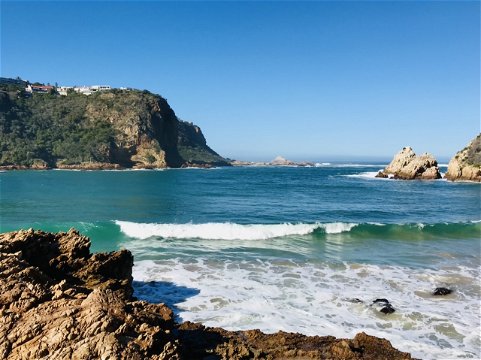
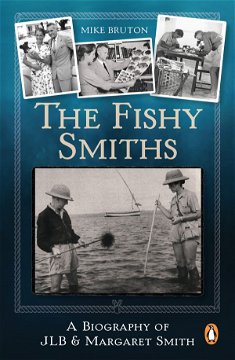

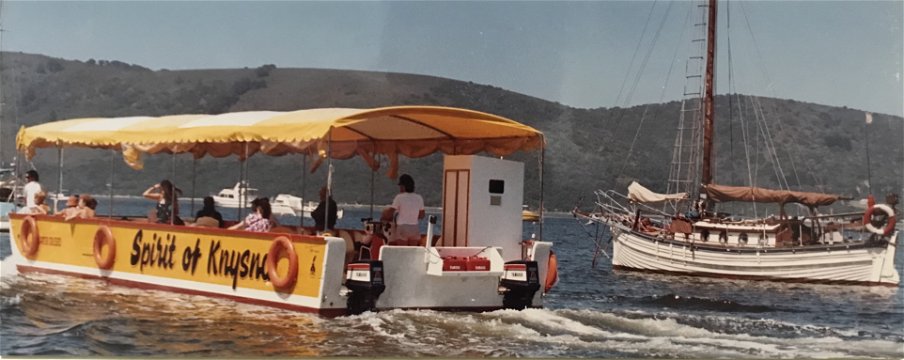
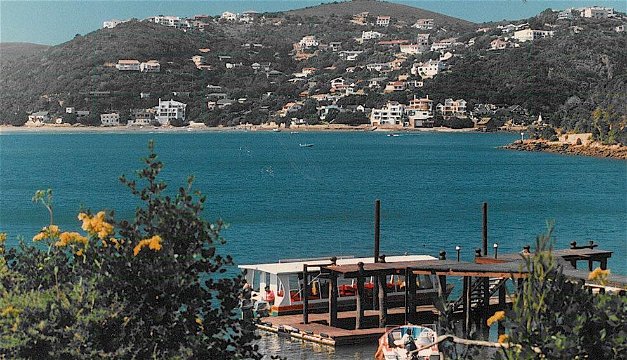
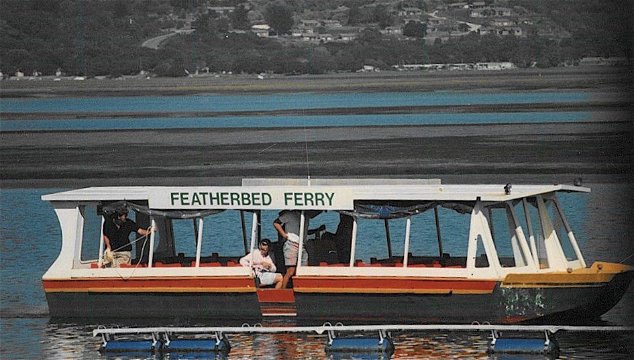

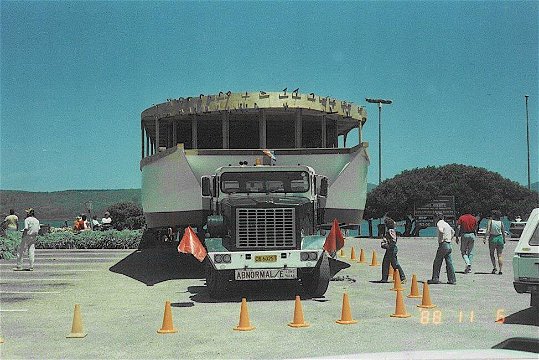
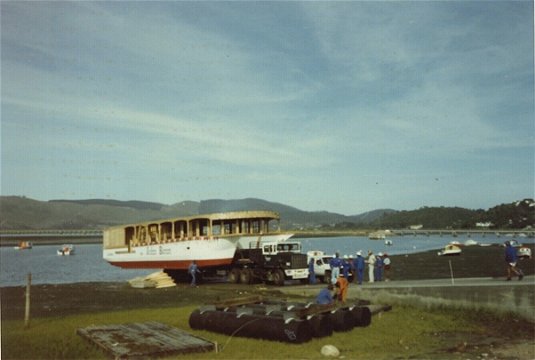
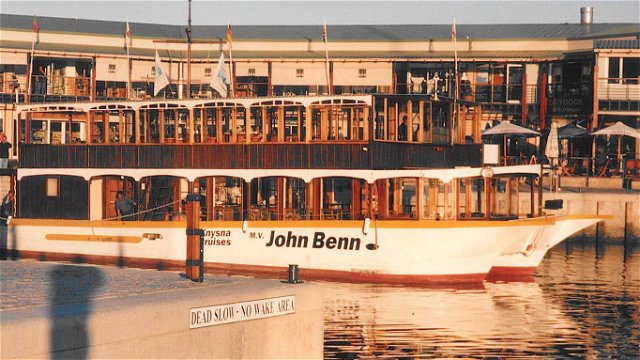
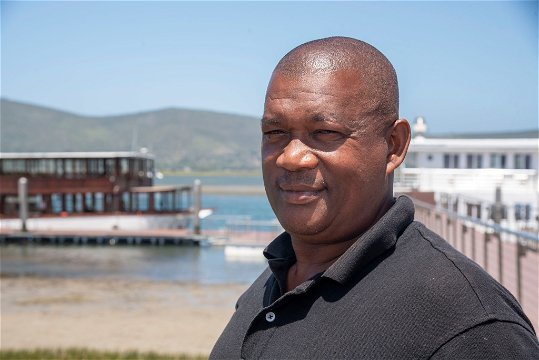

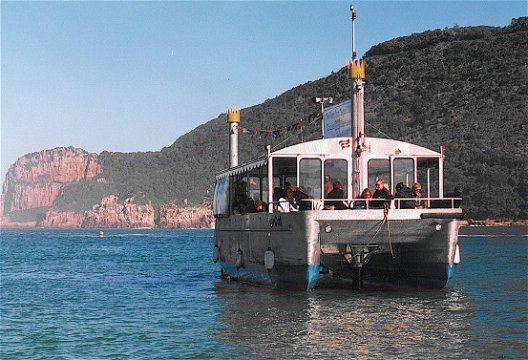
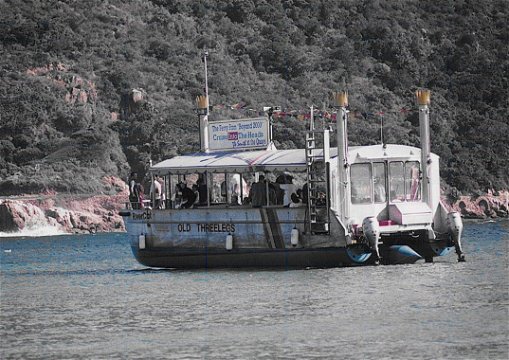


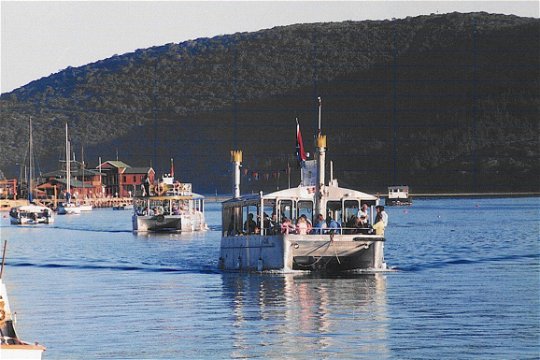
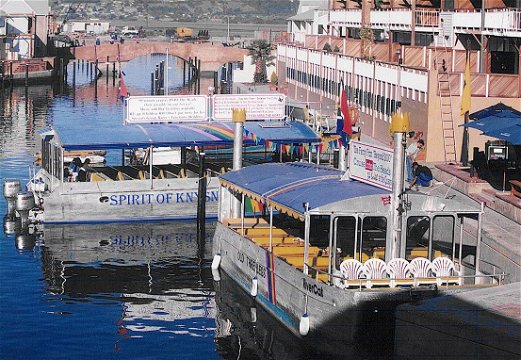


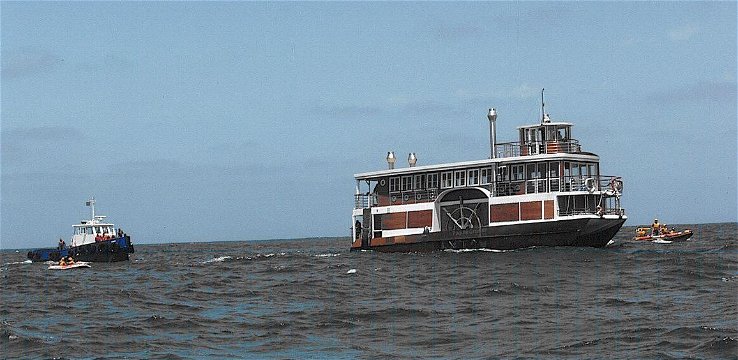
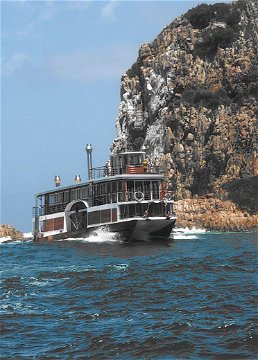
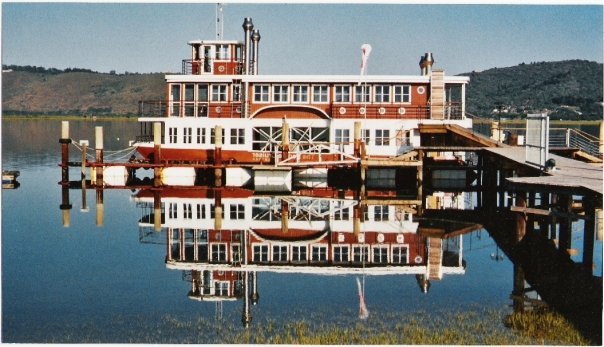

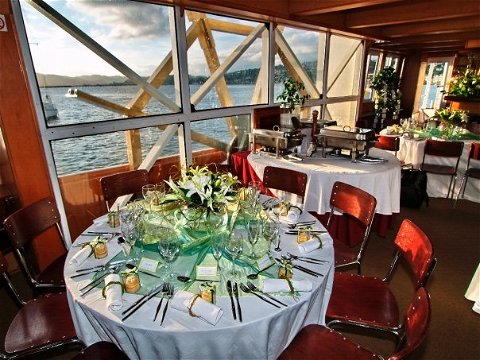


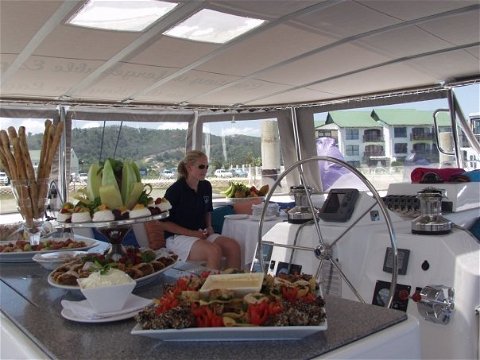
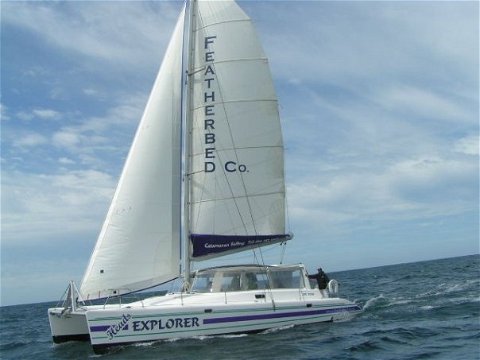

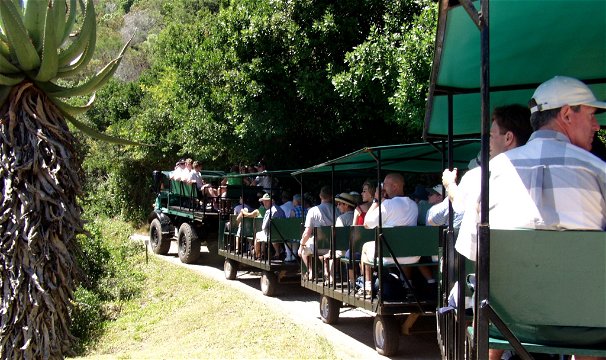
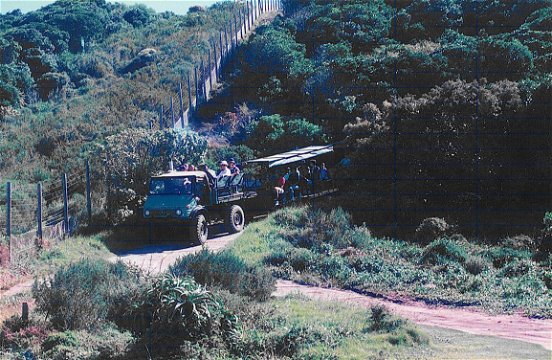


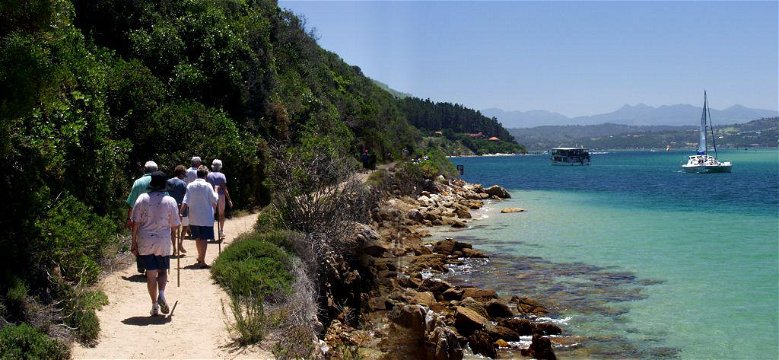
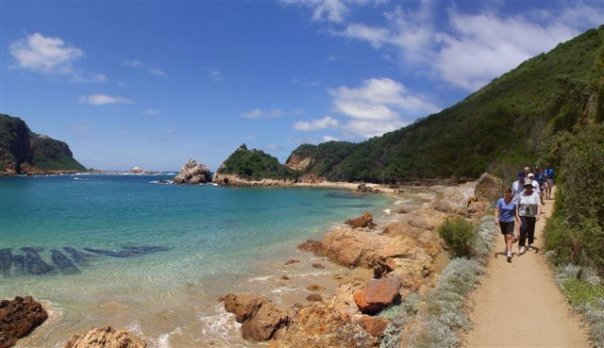
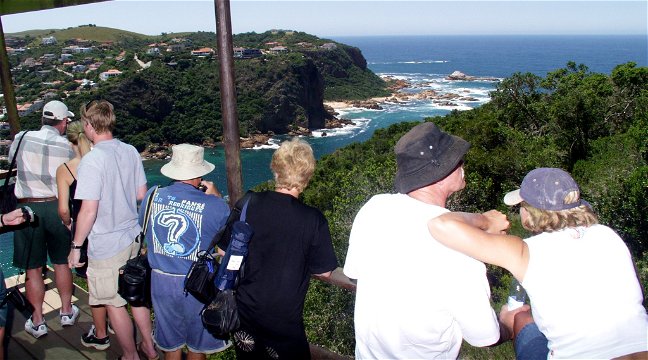
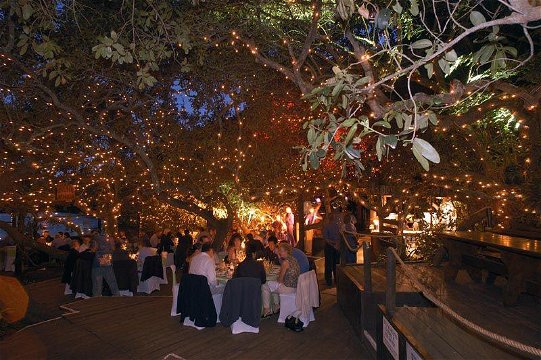


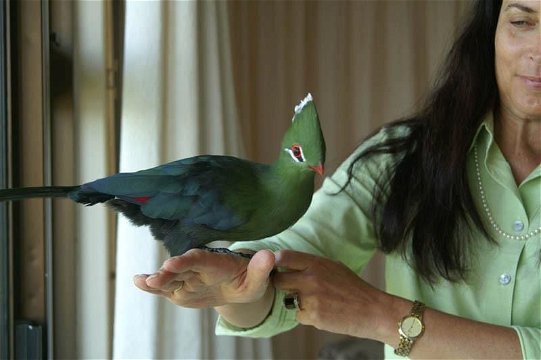

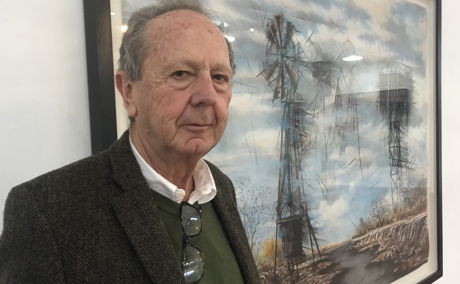
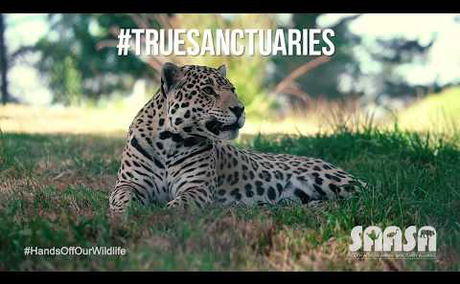
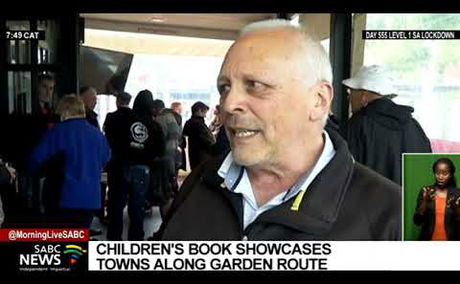
Share This Post